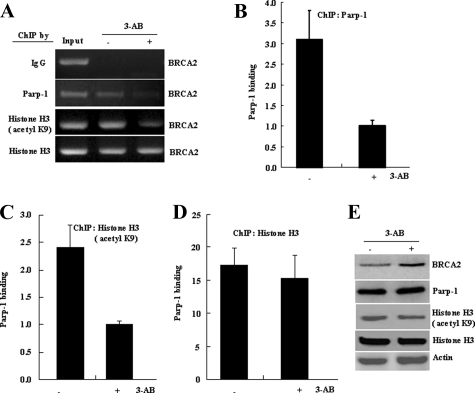FIGURE 5.
Inhibition of Parp-1 activity reduces histoneH3 (K9) acetylation and blocks Parp-1 binding to the BRCA2 promoter. A, ChIP was carried out in MCF-7 cells treated without (–) or with (+) 10 mm 3-AB for 4 h, by using anti-Parp-1, anti-histone H3 (acetyl K9), anti-histone H3 antibodies or normal rabbit serum (IgG) as indicated. A 119-bp BRCA2 promoter target fragment was PCR-amplified and resolved on a 1.0% agarose gel. Quantitative ChIPs from anti-Parp-1 (B), anti-Histone H3 (acetyl K9) (C), or anti-Histone H3 (D) immunoprecipitated chromatin (mean ± S.D.) are shown. E, Western blotting of Parp-1, Histone H3 (acetyl K9), Histone H3, and β-actin in MCF-7 cells treated without (–) or with (+) 10 mm 3-AB for 4 h.

